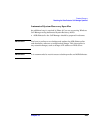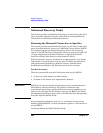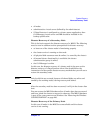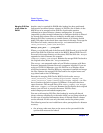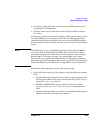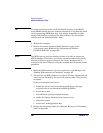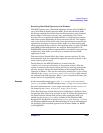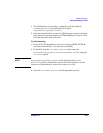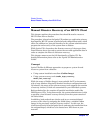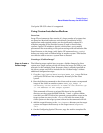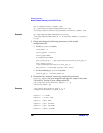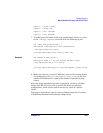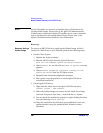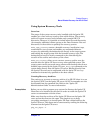
Disaster Recovery
Advanced Recovery Tasks
Chapter 10496
There is no simple procedure for recovering the disk signatures on
Windows NT. MSDN article Q243195 describes a complicated procedure
that includes manual modifying of the registry, and should be followed to
recover disk signatures. Note that using Registry Editor incorrectly may
cause serious problems that may require you to reinstall your operating
system. On the other hand, EADR automatically recovers disk
signatures of all EADR critical volumes and is therefore the preferred
method to be used to restore the MSCS.
You can obtain the original hard disk signatures from the SRD files. The
signature is a number following the volume keyword in the SRD file.
Example -volume 5666415943 -number 0 -letter C -offslow 32256
-offshigh 0 -lenlow 320430592 -lenhigh 2 -fttype 4 -ftgroup
0 -ftmember 0
-volume 3927615943 -number 0 -letter Q -offslow 320495104
-offshigh 2 -lenlow 1339236864 -lenhigh 0 -fttype 4 -ftgroup
0 -ftmember 0
The number following the -volume keyword is the signature of the hard
disk. In this case the SRD file stores information about a local hard disk
(with drive letters C) and quorum disk (with drive letter Q). The
signature of the quorum disk is stored only in the SRD file of the active
node (at backup time), because it keeps the quorum disk locked and thus
prevents other nodes from accessing the quorum disk. It is therefore
recommended to always back up the whole cluster, because you need the
SRD files of all nodes in the cluster, since only all SRD files together
include enough information to configure the disk in Phase 1 for shared
disk volumes. Note that a hard disk signature stored in the SRD file is
represented as a decimal number, whereas dumpcfg requires
hexadecimal values.
Restoring Internet Information Server (IIS) Specifics
Internet Information Server (IIS) is not supported for disaster recovery.
To perform Assisted Manual Disaster Recovery of an IIS, follow these
steps (in addition to the steps required for Assisted Manual disaster
recovery):
1. Do not install the IIS during clean installation of the system.
2. Stop or uninstall the IIS Admin Service, if it is running.
3. Run the drstart command.




